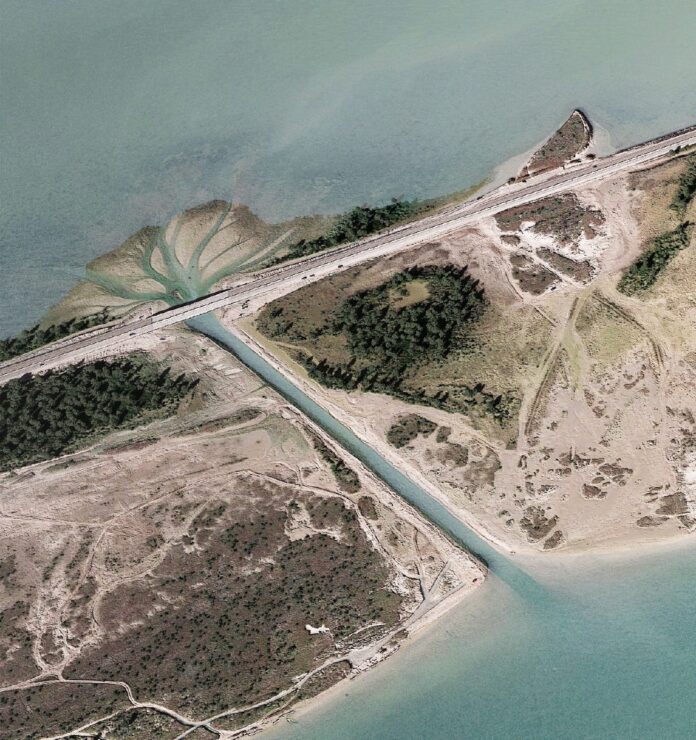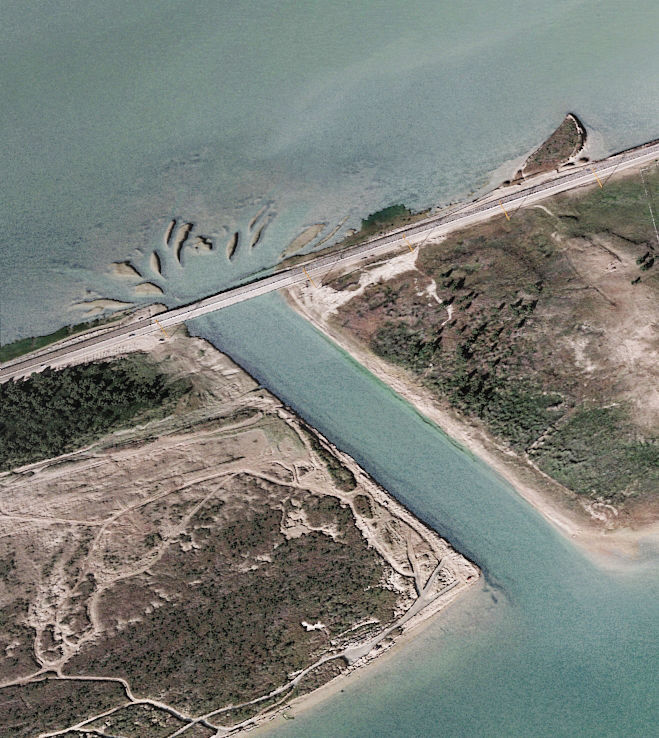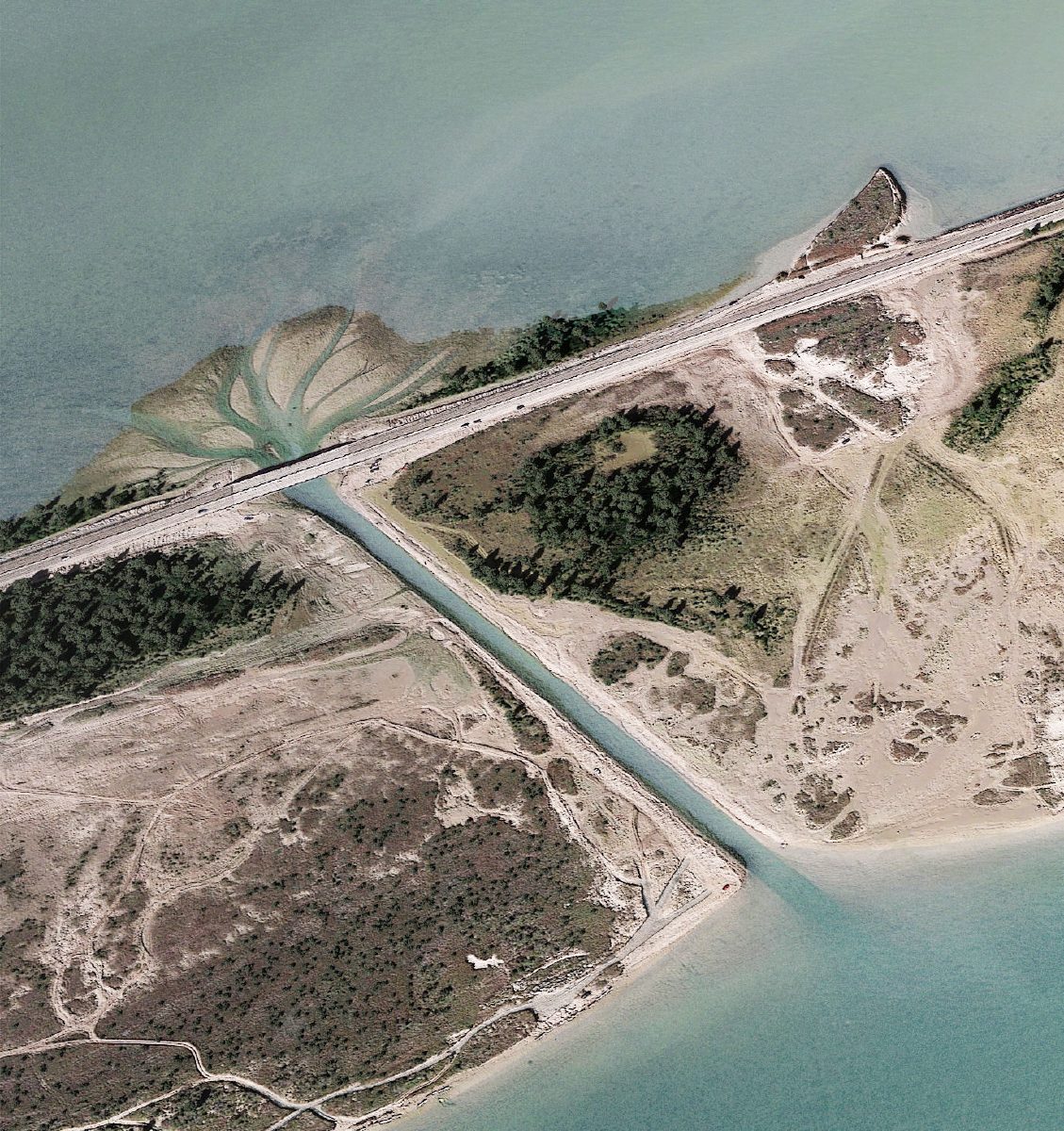BROWNSVILLE — Rio Grande LNG LLC, one of three liquefied natural gas companies proposing to build facilities on Port of Brownsville land south of SH 48, has pledged to help restore the Bahia Grande wetland across the road — if the company actually builds its LNG plant.
BROWNSVILLE — Rio Grande LNG LLC, one of three liquefied natural gas companies proposing to build facilities on Port of Brownsville land south of SH 48, has pledged to help restore the Bahia Grande wetland across the road — if the company actually builds its LNG plant.
In an agreement with the port announced Wednesday, Rio Grande commits provisionally to paying for expansion of the Carl “Joe” Gayman pilot channel that connects the Bahia Grande to the Brownsville Ship Channel. The existing 50-foot channel was dug in 2005 to allow tidal flow in and out of the Bahia Grande as a step toward bringing back the wetland.
The Bahia Grande was a thriving wetland and wildlife habitat before construction of the ship channel during the 1930s, and SH 48 during the 1950s, cut off the natural flow of water between it and the Laguna Madre, creating a dust bowl. Today the Bahia Grande, a unit of the Laguna Atascosa National Wildlife Refuge, is undergoing a slow process of restoration.
Refuge Manager Boyd Blihovde said the pilot channel needs to be widened to improve the flow of water and create the level of “tidal exchange” that will return the Bahia Grande to a less saline, more fully functional estuary.
Funding for the project, from the U.S. Fish and Wildlife Service through the Texas General Land Office, appeared to be in place two years ago, though the sole bid submitted to the GLO came in too high, and by the time the agency put the project out to bid again the funding had dried up.
However, the refuge’s partners, which include the GLO, the port and CameronCounty, are trying to help get the project paid for via RESTORE Act funds from the billions of dollars in penalties against BP stemming from the Deepwater Horizon oil spill disaster.
“I don’t have a crystal ball, but I think we would have a good chance of being funded through that program,” Blihovde said.
Still, he welcomes Rio Grande’s support for the channel widening project if it indicates the company’s intention to be a “good neighbor.” Blihovde said the refuge is worried about the Bahia Grande having “1,000 acres of concrete as our southern neighbor” and that those concerns have been communicated via USFWS to the Federal Energy Regulatory Commission, which has the power to approve or deny a permit for the LNG project.
“I have no control over whether LNG is coming into the area, but if they do build there we hope that we have a good neighbor,” he said. “That the company is willing to be supportive of things like the channel widening, if this is an indication of that I’m happy that they’re trying to step up and do some good things in the area.”
James Markham-Hill, communications manager for Next Decade LLC, Rio Grande’s parent company, wrote in an email that the relevant permitting agencies will decide whether paying for the channel widening counts as “qualifying mitigation” the company would be required to perform to offset the environmental impact of plant construction.
“Regardless, we still intend (and have agreed) to carry out the project once Rio Grande LNG achieves a Final Investment Decision because we strongly believe in the significant and lasting environmental and ecological benefits that it will bring to the Bahia Grande Wetlands Restoration area and the extended South Texas region,” he wrote.
Blihovde said the channel’s banks also need to be stabilized to prevent erosion, which is occurring now and allowing silt to form a delta at the Bahia Grande end of the channel. He estimated the total project cost at close to $4 million.
“Whoever pays for it, we do hope that it gets reinforced correctly and that it will be more of a permanent solution,” Blihovde said.






